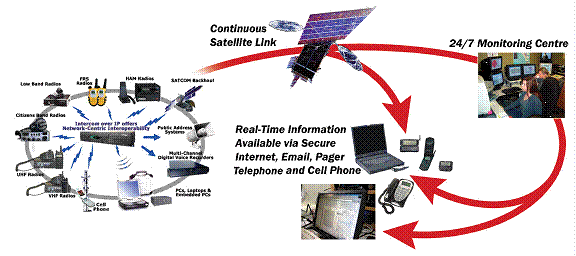Voice Interoperability
After each major event in recent history, the most glaring indication of success or failure by responding agencies has been their ability to effectively communicate with each other. Critical incidents do not know jurisdictional boundaries. Chiefs must think about how their agencies will communicate during a critical incident… But interoperability should also go beyond jurisdictional boundaries by including neighboring jurisdictions and state and federal resources.
Leading from the Front: Law Enforcement's Role in Combating and Preparing for Domestic Terrorism IACP Project Response
Analysis of major incidents worldwide, manmade or natural, over the past five years has repeatedly shown that communications is the biggest challenge facing Emergency Management (EM) Response teams.
Communications generally falls into three main categories:
- Reliable Agency-Specific Voice Communications
EM Response teams mission critical every day voice communications
- Reliable Inter-Agency Voice Communications
Commonly referred to as "Interoperability"
- Reliable Data Communications
There is an increasing need for EM Response teams to have access to secure text messaging, documents, photographs, diagrams, architectural drawings and streaming video
Reliable means that EM Response teams must plan for:
- Every day peak service times and large incidents
- Radio system disruptions such as power outages, tower failures, system interconnect failures
- Personal radio equipment failures (electrical/mechanical problems, battery failure, etc.)
- Catastrophic wide area failures of almost everything
Interoperability generally refers to the ability of EM Response teams to work seamlessly with other systems or products without any special effort. Wireless communications interoperability specifically refers to the ability of EM Response teams to share information via voice and data signals on demand, in real time, when needed and as authorized.

For example, when communications systems are interoperable, police and firefighters responding to a routine incident can talk to each other to coordinate efforts. Communications interoperability also makes it possible for EM Response teams responding to catastrophic accidents or disasters to work effectively together. Finally, it allows EM Response teams to maximize resources in planning for major predictable events such as the Super Bowl, Calgary Stampede, the Caribana parade, or for disaster relief and recovery efforts.
Please contact Anvil Technologies for further details. |